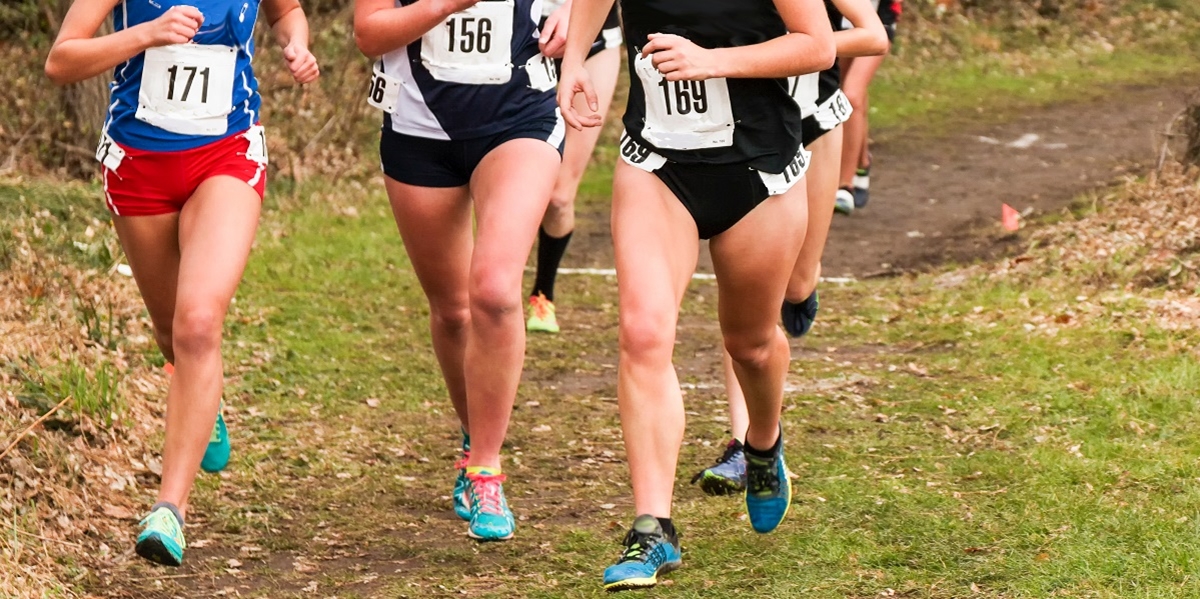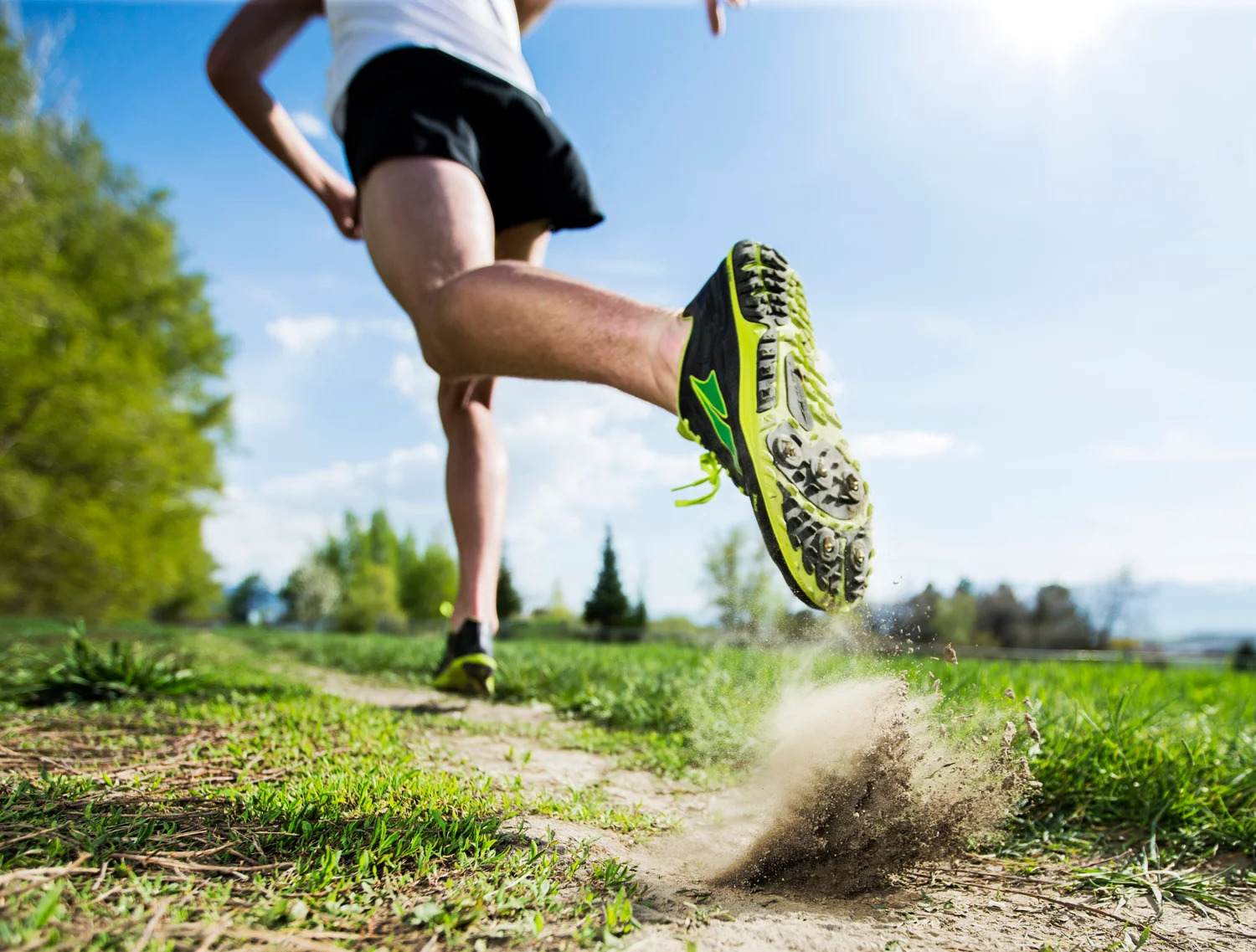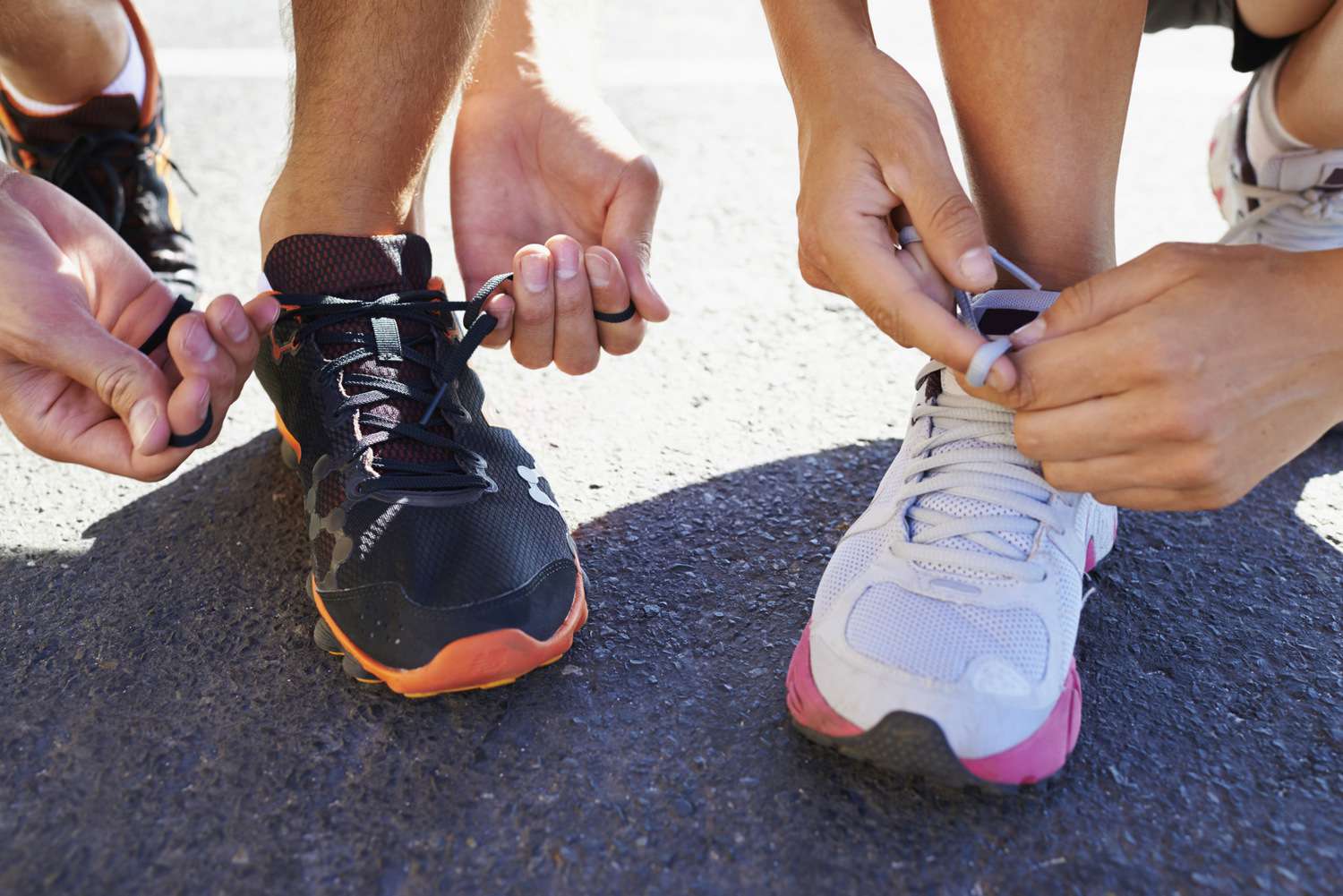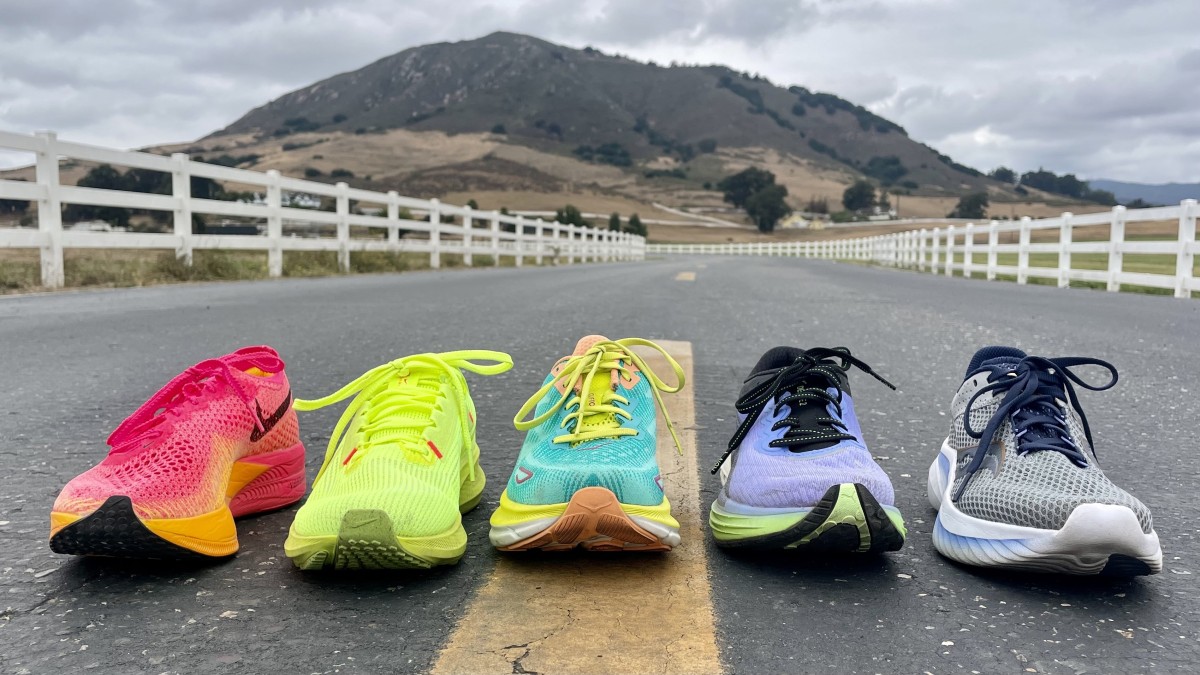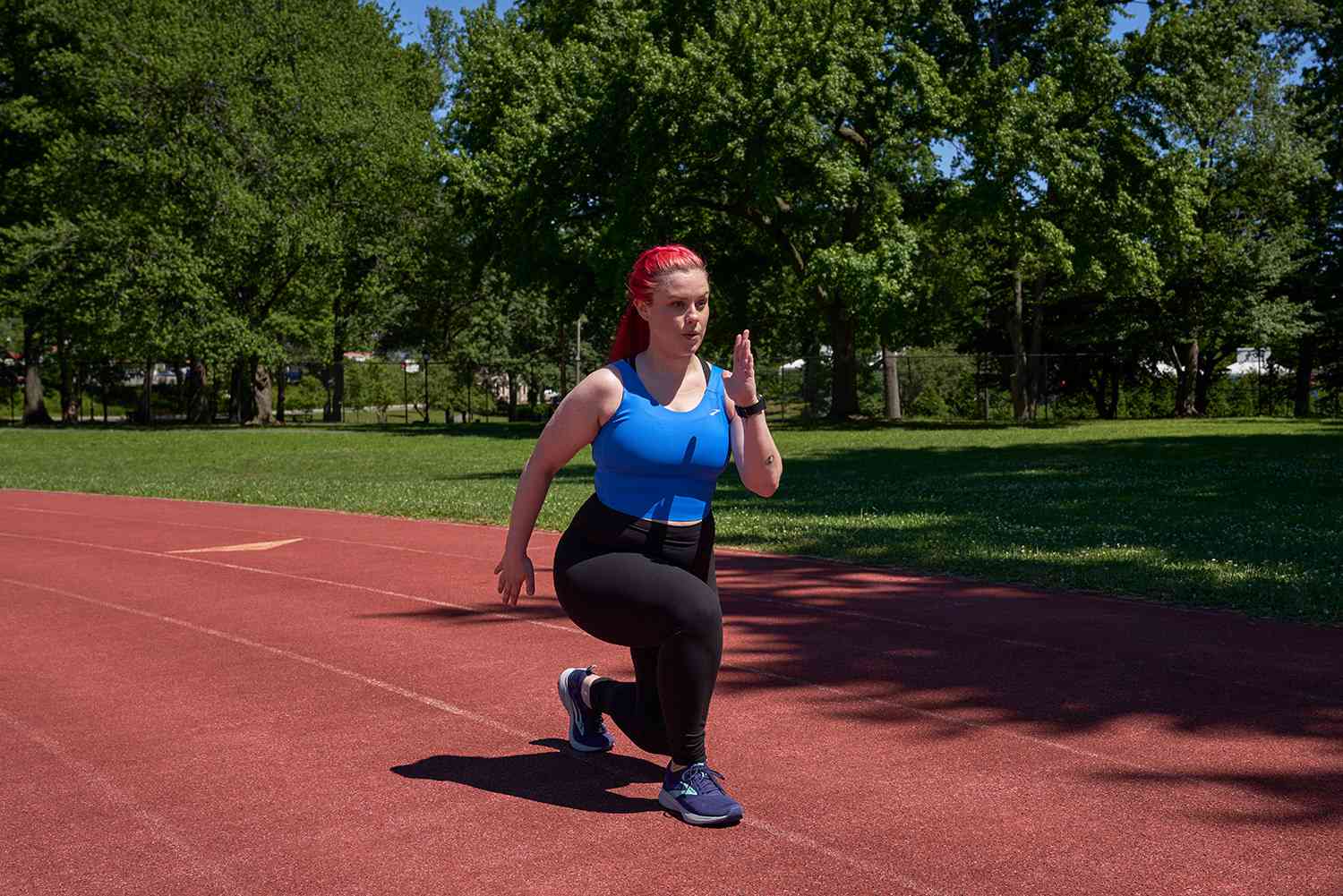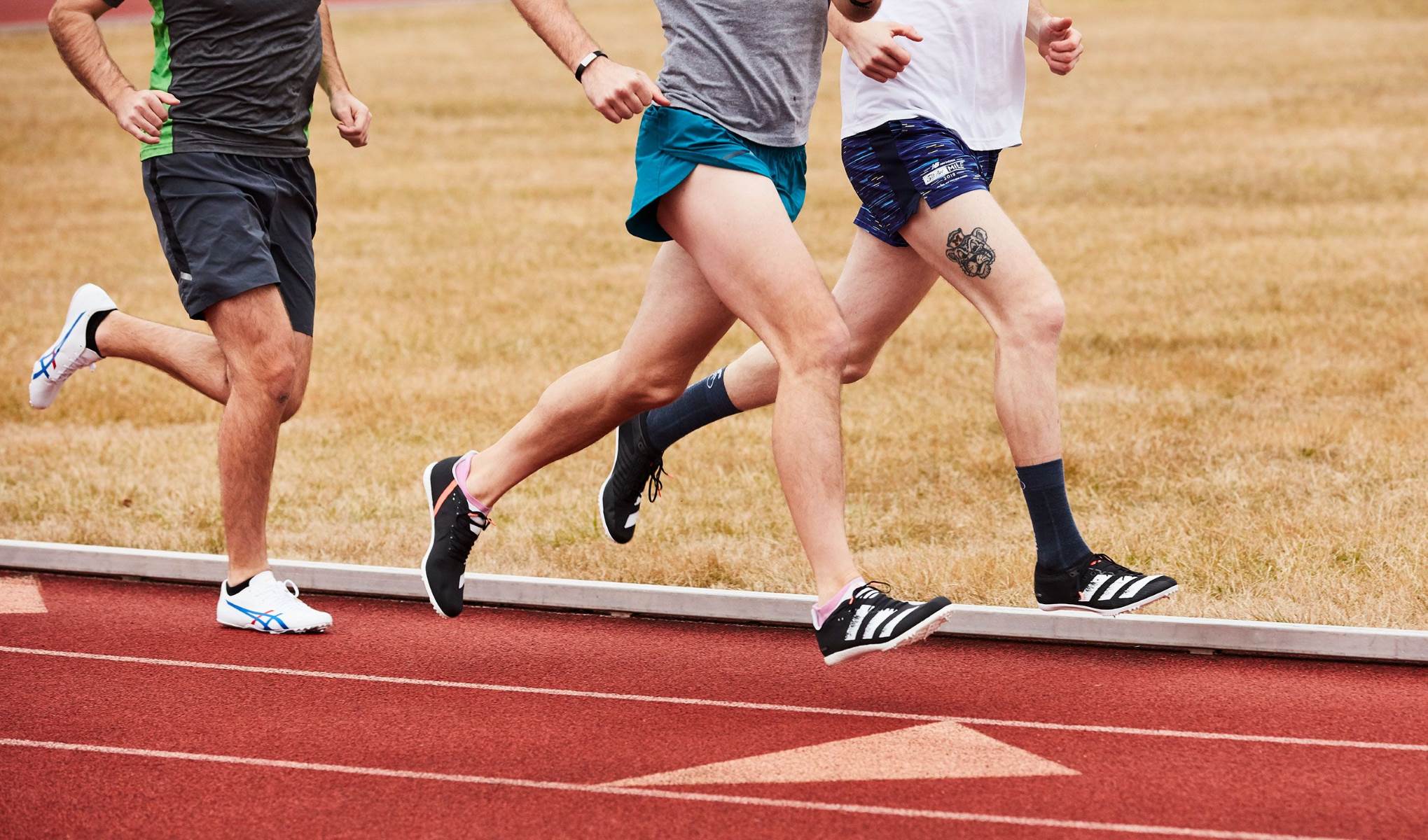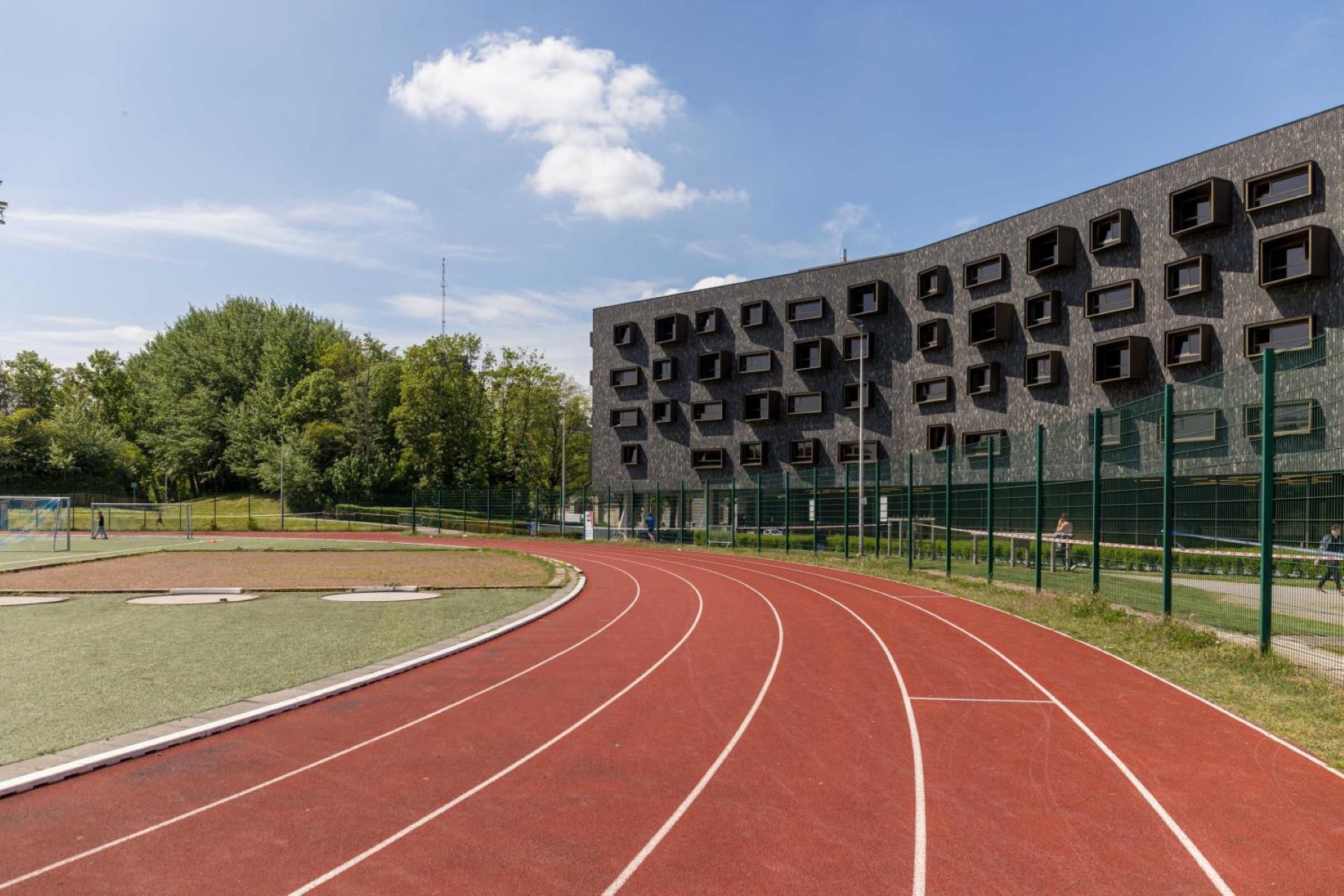Home>Misc>Featured>What Size Spikes Are Good For Long Distance Running
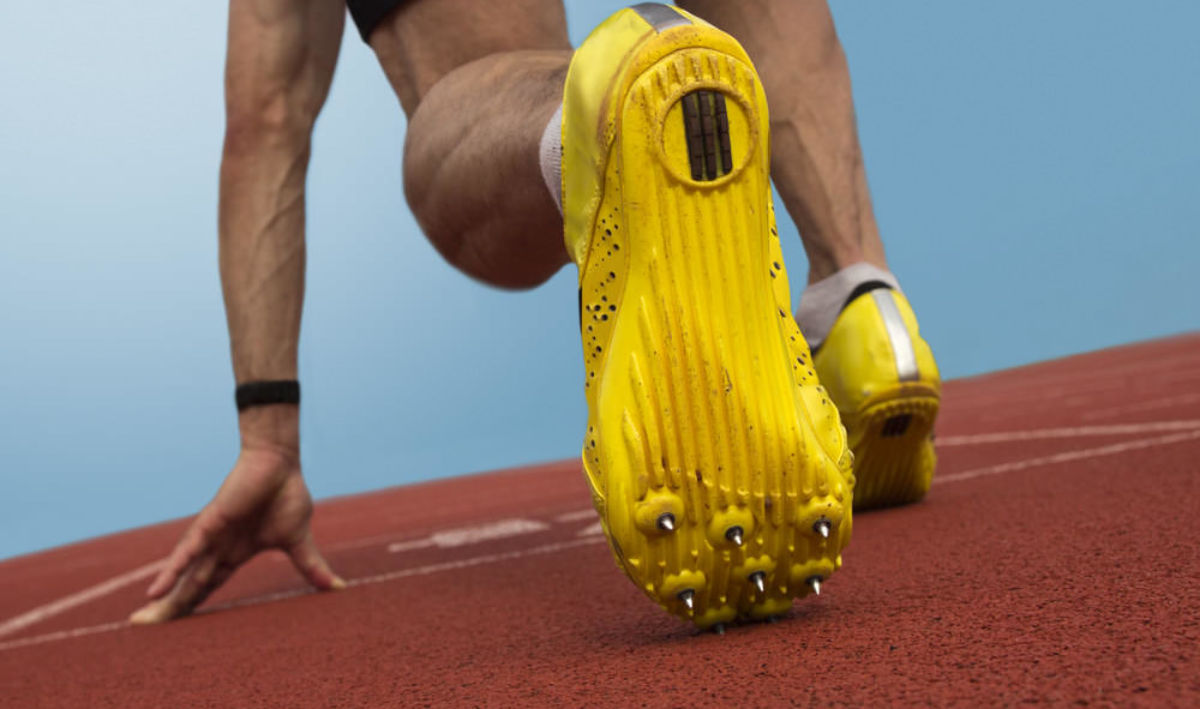

Featured
What Size Spikes Are Good For Long Distance Running
Modified: August 21, 2023
Looking for the best spikes for long distance running? Discover our featured selection of spikes designed to enhance your performance on every stride.
Introduction
When it comes to long distance running, every bit of advantage counts. Endurance, speed, and proper technique all play crucial roles in achieving success. However, one factor that often goes unnoticed but has a significant impact is the size of spikes worn by athletes. Spikes are the metal or plastic protrusions found on the soles of running shoes, designed to provide extra traction and grip on different surfaces.
In long distance running, the right size of spikes can make a world of difference, affecting speed, stability, and overall performance. Choosing the appropriate spike size can enhance the athlete’s ability to maintain grip, reduce slippage, and optimize energy transfer on various terrains. While factors such as running style, surface conditions, and personal preference all come into play, understanding the importance of spike size is crucial in maximizing performance.
In this article, we will delve into the significance of spike size in long distance running and explore the factors that should be considered when selecting the ideal spike size. We will also discuss the benefits and drawbacks of short and long spikes, as well as provide tips on how to choose the right size for your needs.
By the end of this article, you will have a clear understanding of how spike size can enhance your long distance running experience and help you achieve your goals. So, lace up your shoes, and let’s dive into the world of spike sizes for long distance running!
Importance of Spikes in Long Distance Running
Spike size is a critical component in long distance running as it directly affects an athlete’s performance on different surfaces. Spikes provide several advantages that can significantly impact an athlete’s speed, stability, and efficiency.
One of the primary benefits of wearing spikes is the improved traction they offer. The small protrusions on the soles of the shoes dig into the surface, whether it be grass, dirt, or track, providing enhanced grip. This increased traction allows runners to push off more forcefully, generating more power and speed with each stride. It also minimizes the risk of slipping or losing control, especially when navigating sharp turns or running in wet conditions.
Another key advantage of spikes is the reduction in weight compared to regular running shoes. Spikes are designed to be lightweight and minimalistic, allowing for quicker foot movements and less energy expenditure. This weight reduction can make a noticeable difference, especially during long distance races where every ounce matters. By minimizing the weight on their feet, runners can maintain a faster pace and conserve energy for longer periods.
Furthermore, spikes enhance the efficiency of energy transfer. The strategic placement of spikes on the sole ensures that the force generated by each footstrike is transmitted directly into forward motion. This improved energy transfer results in a more efficient running stride, leading to increased speed and reduced fatigue. By harnessing the power of spikes, long distance runners can maintain a consistent and sustainable pace throughout their race.
Additionally, spikes provide stability and support on uneven or challenging terrain. The grip they provide helps runners maintain a solid footing, reducing the risk of ankle sprains or other injuries. This is especially important when running off-road or encountering unpredictable surfaces during a race.
In summary, spikes play a crucial role in long distance running by enhancing traction, reducing weight, optimizing energy transfer, and providing stability. These benefits can lead to improved performance, increased speed, and reduced fatigue, giving athletes a competitive edge. Choosing the right spike size is essential to ensuring these advantages are optimized and tailored to individual running styles and surface conditions. With a firm understanding of the importance of spike size, let’s explore the factors to consider when choosing the perfect size for your long distance running needs.
Factors to Consider when Choosing Spike Size
Choosing the right spike size for long distance running requires careful consideration of several factors. Each athlete’s preference, running style, and surface conditions must be taken into account to determine the optimal spike size. Here are the key factors to consider:
- Running Style: Different runners have varying running styles and preferences. Some individuals prefer a more minimalist feel with shorter spikes, while others may find longer spikes to be more comfortable. It’s important to consider your running style and how spikes will affect your overall performance.
- Surface Conditions: The type of surface you will be running on plays a significant role in spike selection. Different spikes are designed to perform better on specific surfaces such as track, grass, or dirt. Consider the surface conditions you will encounter most frequently during your runs to ensure optimal traction and grip.
- Race Distance: The distance of your races can also impact spike size selection. For longer distances, such as marathons, where endurance is paramount, athletes may opt for shorter spikes to reduce weight and increase comfort. On the other hand, shorter races may require longer spikes to maximize acceleration and stability.
- Weather Conditions: Weather conditions can significantly affect the traction and performance of spikes. In wet or muddy conditions, longer spikes may offer better grip and prevent slippage. Conversely, shorter spikes or even spikeless shoes may be more suitable for dry surfaces or indoor tracks.
- Personal Preference: Ultimately, personal preference cannot be ignored. Some athletes simply feel more comfortable and confident with certain spike sizes. It’s important to understand your own needs and preferences, as this can have a psychological impact on your performance.
Considering these factors when selecting the right spike size will help optimize your performance and ensure you have the best possible running experience. Experimenting with different spike sizes during training sessions can also help you determine which size works best for you. Remember, finding the perfect spike size is a personal journey, and what works for one runner may not work for another.
Now that we have explored the factors to consider, let’s take a closer look at the different spike sizes available for different surfaces.
Different Spike Sizes for Different Surfaces
Choosing the right spike size for long distance running also depends on the type of surface you will be running on. Different surfaces require different levels of traction and grip. Here are the key considerations for selecting the appropriate spike size based on the surface:
- Track: For running on a track, shorter spikes are generally recommended. Track surfaces are typically well-groomed and provide a good level of traction. Shorter spikes, usually around ¼ inch in length, are suitable for maintaining grip without sinking too deeply into the surface and causing unnecessary resistance. These spikes provide the necessary traction, allowing for efficient energy transfer and optimal speed.
- Grass/Dirt: When running on grass or dirt surfaces, longer spikes are often preferred. The terrain is softer, and longer spikes, typically ranging from ⅜ to ½ inch in length, can penetrate the surface and provide better grip. The longer spikes help prevent slipping and sliding, especially in wet or muddy conditions. They provide stability and confidence, allowing runners to maintain a consistent pace and reduce the risk of injury.
- XC/Trail: Cross-country or trail running requires spikes that can handle various terrains, including grass, dirt, rocks, and uneven surfaces. For these conditions, a spike length between ¼ to ⅜ inch is recommended. This length strikes a balance between traction and preventing excessive sinking into the softer terrain. The spikes should be sturdy enough to offer stability and grip on varied surfaces.
- Indoor Track: Indoor tracks typically have a synthetic or rubberized surface. As these surfaces are usually softer and more forgiving than outdoor tracks, shorter spikes or spikeless shoes are often the preferred choice. In such cases, spikes around ⅛ to ¼ inch in length or completely spikeless shoes provide enough traction without causing excessive wear or damage to the track surface.
It’s important to note that these recommendations serve as general guidelines, and individual preferences and surface conditions may vary. Some athletes may find that longer spikes on a track or shorter spikes on grass work best for their specific needs. Ultimately, it is crucial to experiment and find the spike size that offers the ideal balance of traction, stability, and comfort for your running style and surface conditions.
Now that we have explored the different spike sizes for different surfaces, let’s examine the benefits and drawbacks of short spikes.
Benefits and Drawbacks of Short Spikes
Short spikes, typically around ¼ inch in length, offer several benefits for long distance runners. Here are the advantages and drawbacks of using short spikes:
Benefits:
- Lightweight: Short spikes are generally lightweight, allowing for quicker foot movements and reduced energy expenditure. This weight reduction can improve running efficiency, especially during long distance races.
- Optimal Traction: Short spikes provide sufficient traction on well-groomed surfaces such as tracks. They allow for efficient energy transfer, ensuring runners can maintain a consistent speed and reduce the risk of slipping.
- Less Risk of Injury: Short spikes are less likely to cause discomfort or injury compared to longer spikes. They have a lower risk of penetrating the skin or causing excessive pressure on the feet.
- Versatile: Short spikes are suitable for a variety of surfaces, including tracks and indoor tracks. They offer a good balance between traction and avoiding unnecessary sinking.
Drawbacks:
- Less Grip on Soft Surfaces: Short spikes may not provide sufficient grip on softer surfaces such as grass or dirt. In wet or muddy conditions, they may struggle to maintain traction, potentially leading to slipping or sliding.
- Limited Performance on Uneven Terrain: Short spikes may not offer the same level of stability and grip on rough or uneven surfaces. They may not penetrate deeply enough into the terrain, affecting stability and potentially increasing the risk of injury.
- Less Traction on Steep Inclines: Short spikes may struggle to provide adequate traction on steep inclines or descents. The lack of penetration into the surface can make it challenging to maintain control and prevent slipping.
It’s important to consider these benefits and drawbacks when deciding whether to opt for short spikes. Primarily, short spikes are favored for their lightweight nature, optimal traction on well-groomed surfaces, versatility, and reduced risk of injury. However, they may not perform as well on softer or uneven terrains, and stability on steep inclines can be compromised.
Now that we have discussed the benefits and drawbacks of short spikes, let’s move on to exploring the advantages and disadvantages of long spikes.
Benefits and Drawbacks of Long Spikes
Long spikes, typically ranging from ⅜ to ½ inch in length, offer their own set of benefits and drawbacks for long distance runners. Let’s explore the advantages and disadvantages of using long spikes:
Benefits:
- Enhanced Grip: Long spikes provide deeper penetration into softer surfaces like grass or dirt, offering superior grip and stability. They can effectively prevent slipping and sliding, especially in wet or muddy conditions.
- Increased Traction on Uneven Terrain: Long spikes perform well on rough or uneven surfaces, providing better traction and stability. They can dig into the terrain, allowing for confident and secure foot placement.
- Improved Performance on Steep Inclines: Long spikes offer better traction on steep inclines or descents. The increased penetration into the surface helps runners maintain control and prevent slipping, even on challenging terrain.
- Customizability: Long spikes often come with removable pins, allowing athletes to adjust the spike length based on their preferences and the specific surface conditions. This customizability can provide flexibility and adaptability for different races or training sessions.
Drawbacks:
- Increased Weight: Long spikes tend to be heavier compared to shorter spikes. This additional weight can impact running efficiency, especially during long distances, and may contribute to increased fatigue.
- Diminished Speed: Longer spikes can cause slightly more resistance against the running surface due to their increased penetration. This may result in a slight decrease in speed, especially on well-groomed tracks.
- Risk of Injury: Due to their longer length, there is a slightly higher risk of injury with long spikes, such as penetrating the skin or causing discomfort. Runners need to be cautious and ensure proper fitting and adequate protection.
- Less Versatile: Long spikes are not as versatile as short spikes and may not perform optimally on surfaces that do not require as much penetration, such as tracks or indoor tracks.
Considering these benefits and drawbacks, long spikes offer superior grip on softer and uneven surfaces, improved performance on steep inclines, and customizability. However, they come with the drawbacks of increased weight, slightly diminished speed, a higher risk of injury, and limited versatility.
Now that we have discussed the benefits and drawbacks of both short and long spikes, let’s explore the optimal spike size for long distance running.
Optimal Spike Size for Long Distance Running
Optimizing spike size for long distance running is a crucial aspect that can significantly impact an athlete’s performance. While there is no one-size-fits-all answer, several factors can help determine the optimal spike size:
Firstly, consider the surface conditions you will encounter most frequently during your runs. If you primarily run on well-groomed tracks, shorter spikes, around ¼ inch in length, are typically recommended. These spikes provide sufficient traction without causing excessive resistance, allowing for efficient energy transfer and maintaining a consistent pace.
On the other hand, if your training or races involve softer surfaces like grass or dirt, longer spikes, ranging from ⅜ to ½ inch in length, are often preferred. These longer spikes provide deeper penetration into the terrain, offering superior grip and stability. They are especially beneficial in wet or muddy conditions where traction is critical.
It’s important to assess your running style as well. Some runners may prefer the minimalist feel and quicker foot movements offered by shorter spikes, while others may find the added stability of longer spikes more beneficial.
The distance of your races should also be taken into account. For longer distances, such as marathons, where endurance plays a crucial role, shorter spikes are often favored. They reduce weight and fatigue and provide optimal traction on well-groomed tracks. Conversely, for shorter races where speed and acceleration are paramount, longer spikes may be preferred to maximize grip and stability.
Lastly, consider your personal preference and comfort. The psychological aspect of running cannot be ignored, and if a particular spike size makes you feel more confident and comfortable, it can have a positive impact on your performance.
In summary, there is no definitive answer to what spike size is best for long distance running. It depends on a combination of factors including surface conditions, running style, race distance, and personal preference. Experimenting with different spike sizes during training sessions can help you determine which size works best for you and suits your specific needs.
Now that we have explored the optimal spike size for long distance running, let’s go over some tips to help you choose the right spike size.
Tips for Choosing the Right Spike Size
Choosing the right spike size for long distance running can be a personal and individualized process. Here are some tips to help you make the best decision:
- Consider the Surface: Take into account the type of surface you will be running on most frequently. Different surfaces require different levels of traction, and selecting the appropriate spike size can enhance your grip and stability.
- Understand Your Running Style: Evaluate your running style and preference. Some runners may prefer the lightweight and quick foot movements offered by shorter spikes, while others may feel more comfortable and confident with the added stability of longer spikes.
- Assess Race Distance: Analyze the distance of your races. For longer distances, shorter spikes can minimize weight and fatigue, while longer spikes may be more beneficial for shorter races that prioritize speed and acceleration.
- Take Weather Conditions into Account: Consider the weather conditions you are likely to encounter during your runs. Longer spikes can offer superior grip in wet or muddy conditions, while shorter spikes or spikeless shoes may be more suitable for dry or indoor track surfaces.
- Try Different Sizes: Experiment with different spike sizes during training sessions. This allows you to assess their impact on your performance and gauge your comfort level with each size. Keep track of how each size affects your traction and overall running experience.
- Seek Professional Advice: If you’re still unsure about the right spike size for you, consult with a running coach or shoe specialist. They can provide valuable insights and recommendations based on your specific needs and running style.
- Consider Personal Comfort: Ultimately, choose the spike size that feels most comfortable and natural to you. It’s essential to feel confident and supported during your runs to maximize your performance.
Remember that finding the optimal spike size for long distance running may require some trial and error. It’s a process of understanding your needs, considering the surface conditions, and evaluating your personal preferences. With persistence and experimentation, you’ll be able to identify the spike size that allows you to perform at your best.
Now that we have explored some tips for choosing the right spike size, let’s wrap up our discussion on the significance of spike size in long distance running.
Conclusion
The size of spikes in long distance running may seem like a minor detail, but it plays a significant role in an athlete’s performance. The right spike size can enhance traction, stability, and overall efficiency, leading to improved speed and reduced fatigue.
When choosing spike size, it’s essential to consider factors such as surface conditions, running style, race distance, weather conditions, and personal preference. Short spikes offer benefits such as lightweight design and optimal traction on well-groomed surfaces, while long spikes provide superior grip on softer or uneven terrain.
Ultimately, there is no one-size-fits-all answer when it comes to spike size. It’s a personalized process that involves experimentation and finding the right balance between comfort, speed, and traction for each individual runner’s needs.
By understanding the importance of spike size and considering the various factors discussed, athletes can make informed decisions to optimize their performance. Remember to assess the surface conditions, evaluate your running style, consider race distance, and take weather conditions into account. Trying out different spike sizes during training sessions and seeking professional advice can also help you make the best choice.
So lace up your shoes, consider the surface you’ll be running on, and choose the spike size that boosts your confidence and allows you to reach new heights in your long distance running endeavors!
